Everything About Shoppable Content With 12 Best Examples
Shopping as an idea and practice has seen major transitions over the years. Commerce businesses brought various inventions to make shopping more exciting, engaging, and seamless for the consumers.
Starting from offline commerce to ecommerce and now the biggest shift: Shoppable Content or Shoppable Posts.
Shoppable content is a discovery that has emerged as a new-age shopping venue with the integration of social media content with eCommerce.
As social media merges with online shopping, we find consumers persistently browsing, exploring, sharing, and engaging with different forms of content to fulfill their shopping needs.
Well, aren’t you feeling intrigued to know more? Let’s know more.
What Is Shoppable Content?
Shoppable content is any form of content (especially visuals) that allows consumers to shop the products directly from the content or add products to the cart without having to scroll through pages.
For brands, the shoppable content definition means when you take content (posts) that features products, and you tag those products with checkout link, price, details, etc., so that users can buy those products directly from the posts.
For consumers, when they come across content (images, videos, etc.) and feel ignited to purchase the products displayed, they can instantly buy the product as shoppable content makes their purchasing efforts minimal.
It can be user-generated content or branded visual content. The idea is to merge the point of inspiration with the point of sale through content. Moreover, eliminating the buyer’s inconvenient journey from the product description page to the long-drawn ecommerce steps that take longer to reach the purchase page.
Shoppable content makes things more immediate and result-driven, combining the browsing and shopping experience.
Why Is Shoppable Content Important For eCommerce?
Billions of people globally browse social media platforms, and most of them do it to get inspired, find new products, explore styles, etc., through content. 87% of people say social media helps them decide what to buy.
Today, over 130 million Instagram users tap on shoppable posts to learn more about products every month.
Consumers want inspiration, information, and shoppability at their fingertips (and in one frame). Shoppable posts or shoppable content perfectly ticks all the boxes: INSPIRING, INFORMATIVE, & SHOPPABLE.
This shoppable post-marketing enables brands to boost conversions, build social proof through inspiration, inspire purchases, increase ecommerce conversion rate, and much more.
Not just that, brands can also leverage these shoppable posts marketing on their ecommerce site/online store as shoppable posts on different marketing channels like social media, social ads, emails, in-store displays, etc. These shoppable posts shorten the buying journey providing instant gratification to the shoppers.
Make Your Social Content Shoppable & Increase Conversions
Top 6 Types of Shoppable Content & Shoppable Posts
1. Shoppable Images
Shoppable images are images and photos integrated with shopping features for the products displayed in them. Images are the most popular form of visual content used by eCommerce brands to lure, engage, and influence consumers.
Attractive images with a beautiful setting and product display could influence the consumers to purchase. With the help of various third-party tools like a Visual Commerce platform, you can easily create Shoppable images and publish them on your website.
This real-time shoppability could result in an instant conversion without the risk of cart abandonment.
2. Shoppable Videos
High-quality, engaging shoppable videos are another great variety of shoppable social content. Videos are the most famous and interactive type of content available out there.
Over 5 billion YouTube videos are streamed daily, with the possibility of escalating conversion by 80% through videos. In addition, brands can easily enable shopping to the videos by embedding product links for buying the products featured in the video.
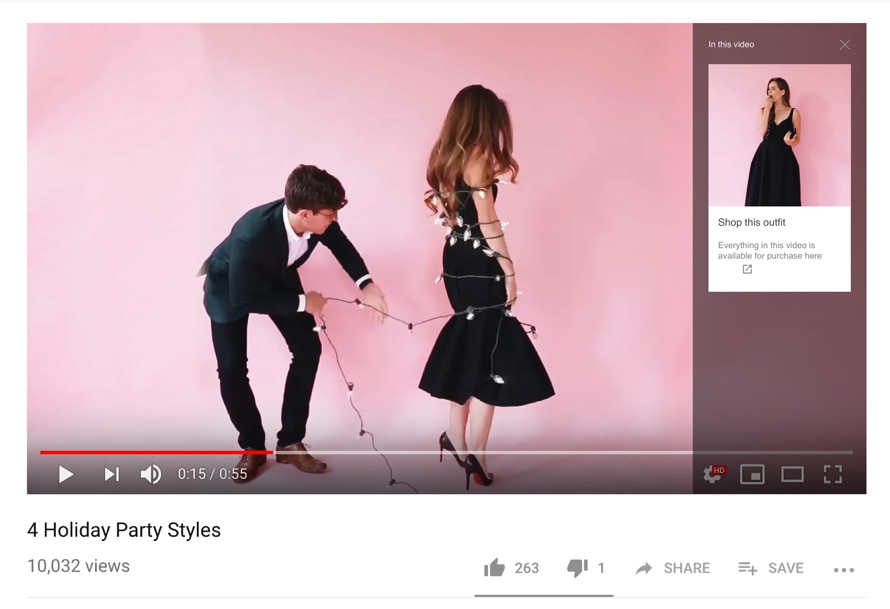
Users can get shoppable posts marketing details for products in a dedicated video advertisement by brands. Besides, videos are shared much more than any other form of content, providing extended exposure and traffic to businesses.
3. Shoppable Articles
Articles and blog posts have a loyal audience. And this loyalty of the audience shows that the articles deliver valuable and informative content to their readers.
Adding shoppability to an article is a great way to sell the products parallel to content engagement.
A brief and crisp product discussion accompanied by visuals and instant capability will influence the viewers to make purchases.
4. Shoppable Magazines
Magazines have been a famous source of trending news and content in both offline and online space. Various brands add shoppability to product visuals in digital shoppable magazines.
Magazines are known for striking visuals that inspire the readers, and adding buying option links to the products page would redirect the interested audience to the relevant product page.
Fashion magazines are a popular example of digital shoppable magazines.
5. Shoppable Social Media
Social commerce platforms have been at the starting checkpoint of shoppable content. Pinterest with buyable pins, Instagram shoppable posts marketing or Facebook shop are key examples of shoppable social media content.
Instagram Shoppable Posts
Shoppable Instagram enables business profiles to create shoppable stories and shoppable posts using their in-built product tagging feature. Shoppable Instagram has various features spread across Instagram to tap into the users’ social behavior without interrupting their social activities.
Brands can turn their business accounts into shoppable content storefronts, and users can engage with their posts and buy the products in them by clicking on the product tags. Brands on Instagram focus primarily on visuals, and with the shoppable content features, they can use these visuals to increase their conversions.
Facebook Shop
Facebook has introduced the shoppable social media content feature using product tagging and buying them through the posts. You need to have a Facebook business page and a product catalog, and you can also run Facebook Ads with target audience-specific promotions.
The Facebook shop also delivers perfect customer relationship possibilities by allowing customers to contact brands directly from Facebook messenger, bringing brands closer to their customers.
And linking social with commerce i.e., social eCommerce, has made it a diversified shoppable content ecosystem. Many big brands are already reaping the benefits of this shoppability.
6. Shoppable Galleries
Shoppable galleries are a collection of shoppable social media posts like videos and images, curated like a gallery and embedded on ecommerce websites for the visitors to explore the brand’s products, engage with them, and make purchases.
These shoppable posts galleries work as a captivating source of inspiration for the users. Brands can use user-generated content or influencers’ content so that the users see how a product looks in real life, its aesthetics, or how the product can be helpful for them, making it authentic & engaging; growing the conversions, engagement, and traffic for the brand.
Tagshop
Tagshop allows you to utilize your content and effectively turn it into conversions. It is a comprehensive social commerce platform for brands to leverage social content and build shoppable galleries ready to use on websites and increase conversions, brand growth, and revenue instantly.
Tagshop lets you publish your Instagram store, UGC galleries, product reviews, and shoppable galleries on your website. These features have allowed brands to engage their website visitors and let them shop from shoppable galleries by tapping on the shoppable posts hotspots without having to search around the entire website.
Boost Your Online Sales With Shoppable Social Content By Tagshop
12 Brilliant Shoppable Content Examples
1. Ted Baker
A luxury clothing brand from Britain – Ted Baker, has launched multiple campaigns with shoppable videos. Ted Baker is a brand with top-end products, attention to detail, and a humorous side.
Ted Baker launched shoppable posts marketing video campaign with high entertainment value, engaging visuals, and interactivity.
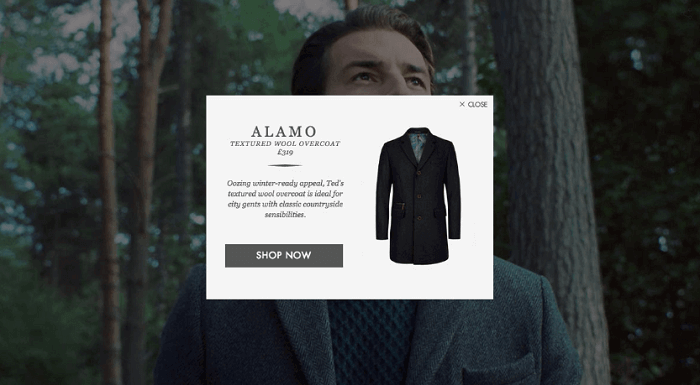
They reflected their brand values and identity through the videos impressively. Products were tagged as shoppable in the video that allowed the users to click and get more information, product description and buy the products shown in the video in real-time.
2. ASOS
ASOS launched a shoppable posts (photos) campaign, AsSeenOnMe and integrated two key factors: user-generated content & Shoppable posts marketing.
They encouraged their customers to share pictures of the products they bought from the website and share them on social media with Hashtag #AsSeenOnMe.
Then the brand ASOS collected and displayed these user-generated pictures on their website under the feature: Shop the look. Users had the option of buying products from these UGC pictures from a shoppable link on the photo.
3. Diesel
Diesel launched a hashtag campaign, #ForSuccessfulLiving, on their 30th anniversary. This global brand created shoppable videos with their models.
Featuring models doing catwalks in a video, the users can buy the looks or products during the videos by clicking on it, which is redirected to the product page.
4. Made.com
We have seen shoppable UGC fashion brands, but the brand Made.com is all about homeware and furniture. Its UNBOXED campaign features shoppable user-generated content.
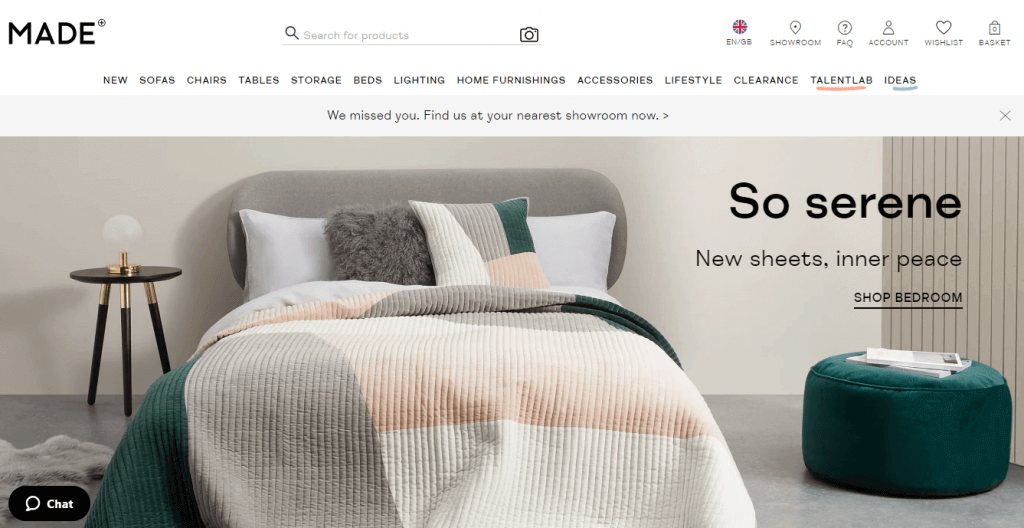
The idea is to inspire users with how existing customers are using Made’s products. Along with the realistic and authentic UGC images, they embedded links to the featured products so that users can easily buy the products.
5. H&M
H&M, the leading global fashion retailer, is not behind in the race for leveraging shoppable social media. They have turned their Instagram profile into a shoppable content storefront.

They tag products as shoppable on their Instagram posts so that users from their massive list of 35+ million followers can get inspiration, discover new products, and make purchases, everything on Instagram.
6. Net-A-Porter
Probably the most unique and perfect examples of social commerce is the use of shoppable magazine content by any brand. Net-A-Porter has combined a digital technology into offline media by turning their print magazine shoppable.
The shoppable print magazine works as an integration of digital and offline for users to buy their looks in the magazine. The idea is to install a Net-A-Porter app, scan the code in a magazine, and land on the product page where users can complete the purchase.
7. Kate Spade
Kate Spade New York is the perfect example of Shoppable videos featuring celebrities. In their partnership with Anna Kendrick, they introduced a campaign called #MissAdventure.
The videos followed the interesting lives of personalities in which they strategically integrated their products. At the end of the video, the viewers can shop the products featured in the video right from the list given there.
8. Joules
Joules, a fashion retailer of online shoppable lookbooks, are featuring engaging images tagged with the products. So, users can click on the hotspots in the image and add those products to their carts.
It is an excellent solution for online retailers and ecommerce brands to make the shopping experience delightful and sell more with these shoppable galleries and lookbooks.
9. French Connection
FC is a popular brand across countries that used shoppable lookbooks for their Spring 2014 and Spring 2017 collection. In the 2014 edition, the photos came with a “+” sign; clicking on that would lead to the product page.
In 2017, they used a “Shop Now” CTA with images and product photos in their lookbooks to instigate purchases from the users.
10. Habitat
Habitat is a furniture and homeware store from the UK that used its “Habitat Blog” to leverage the shoppable posts blog content. They create multiple blogs with the “Shop The Look” option.
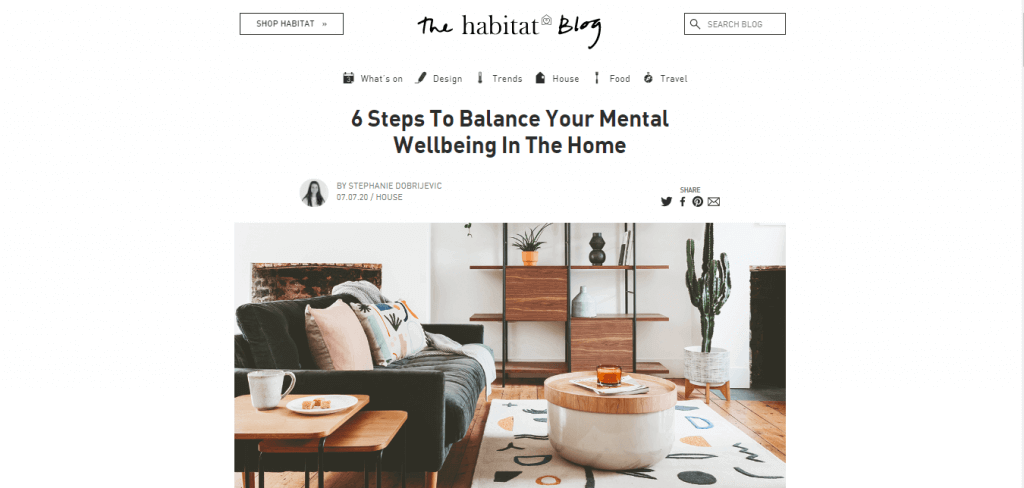
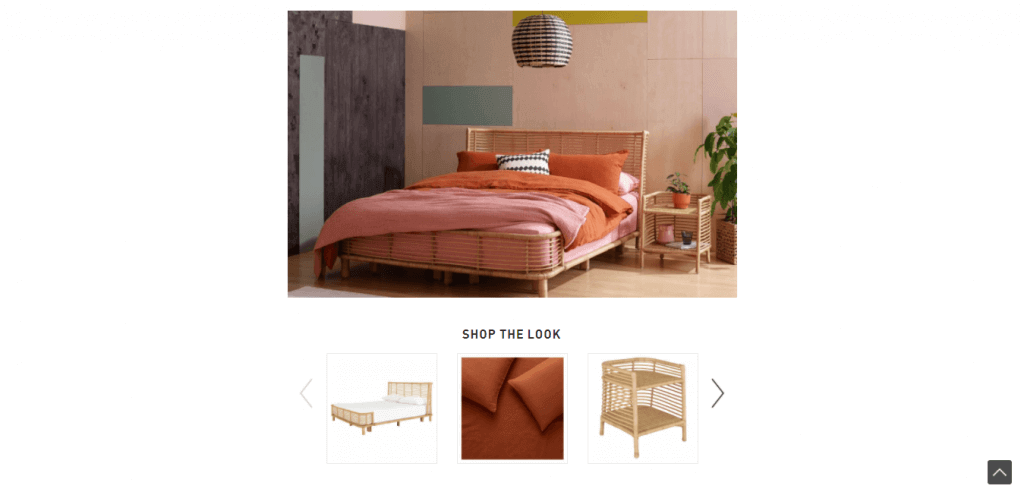
It is an excellent marketing strategy where they delivered interesting information through blogs like “How To Make A Recipe.” In this, they nicely integrated their products and gave a shopping option at the bottom of the blog.
11. Wayfair
Wayfair uses Pinterest to sell its products and is an example of Shoppable social media. The shop section in the brand’s profile allows users to explore and buy products directly using Pinterest buyable pins.
You need a Pinterest business account to be able to create a Shopping section. As Pinterest is a visually appealing platform, this gives the perfect opportunity to highlight shoppable visual content & products.
12. Eureka Street Furniture
Eureka Street furniture is an online store for furniture shopping from Australia. They have created a Shoppable Instagram feed & shoppable UGC gallery on their website.
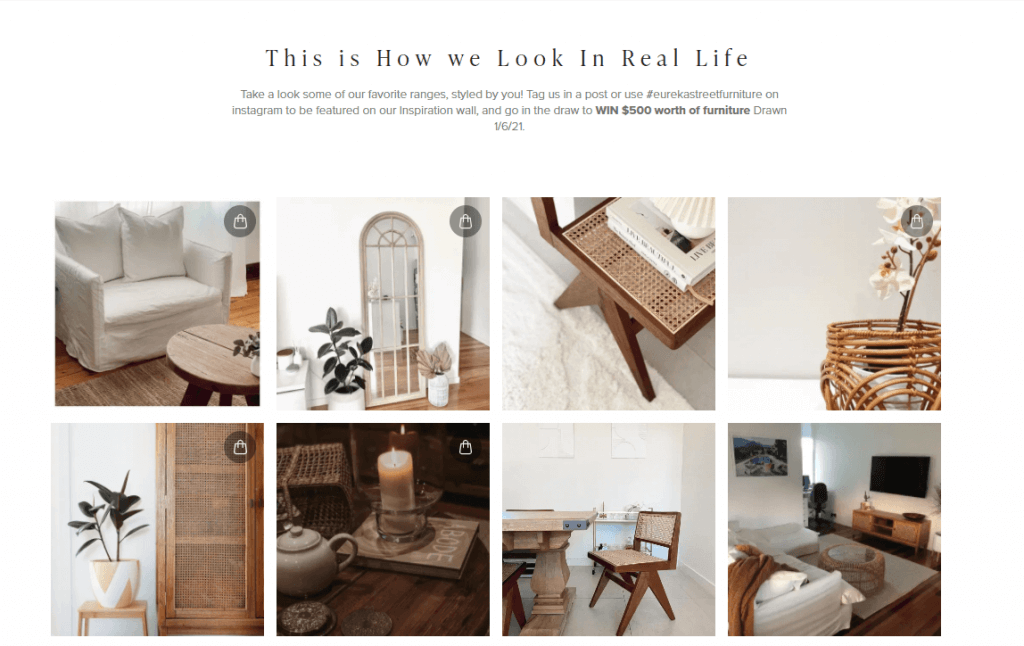
The shoppable Instagram feed features posts from their profile and Shoppable UGC gallery features user-generated content from brand hashtags and mentions.
Social shopping galleries help in boosting brand sales as they work as inspiration for users. Also, it leads to more engagement, building brand trust and much more.
Benefits of Shoppable Content For Brands
Here are some of the key benefits that brands can garner by leveraging shoppable content in their marketing campaigns, online store, brand website, etc.
1. Inspire Your Consumers
Inspiration nowadays plays a huge role for consumers when it comes to shopping. Consumers look for real and authentic inspiration that can help them understand product quality, aesthetics, and value perfectly.
2. Shows Social Proof
Leveraging user-generated content like real customer photos and videos could help in building the much-needed social proof. Consumers develop trust, credibility and find authenticity through the content that helps them make favorable conversion actions.
3. Seamless Shopping Experience
Longer shopping journeys, complex navigation, etc., are some key factors that negatively affect the shopping experience. However, you can make your shopping experience more seamless, quick, easy, and instant with shoppable content.
4. Content Drives Conversions
Having the option to purchase the featured product instantly through content increases the chances of conversions. Moreover, shoppable content streamlines the purchase journey where users can easily get information, engage with content, and shop the products they like instantly.
Shoppable Content With Tagshop
Tagshop is a Shoppable content platform that helps your brand to make content shoppable, be it branded content or user-generated content from social media platforms.
With Tagshop, you can create shoppable content campaigns through the following steps;
- Collect and curate branded content & UGC from 15+ social platforms
- Upload your product catalog & Tag products to content
- Customize your content feeds with personalization options
- Moderate content to showcase the most valuable content
- Publish shoppable content on brand website/ecommerce, online store, emails, etc.
Besides these, you also get different options like Shoppable links, automatic content updates, integrate brand offers, add announcements, add custom CSS, etc.
Make Your Social Content Key Seller By Integrating Shoppable Experiences Through Tagshop
Closing Statement
Any content marketing strategy aims to attract leads and increase ecommerce conversions through valuable and interesting content. And Shoppable content hits the aim precisely and convincingly.
Shoppable content has brought a revolution by unifying content and commerce, which were earlier parallel to each other.
Brands have been able to deliver a supreme consumer experience. In contrast, users have been able to consume and explore social and shopping at once with minimal time and effort consumption.
And this has resulted in a maximized eCommerce conversion rate and growing revenue for the businesses.


:format(webp)/cdn.vox-cdn.com/uploads/chorus_image/image/57011215/IMG_8772.0.jpeg)







